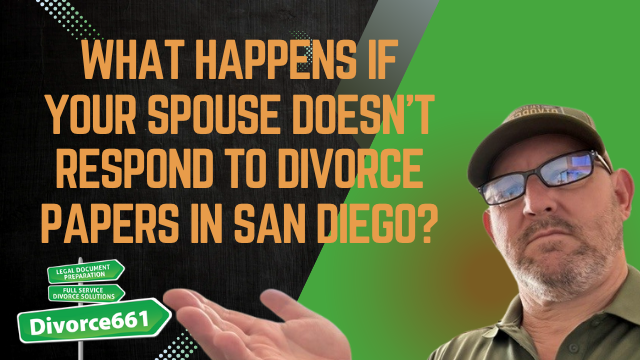What to Do If Your Divorce Papers Are Rejected in San Diego County
I’m Tim Blankenship from Divorce661. If you filed for divorce in San Diego County and your paperwork was rejected, don’t panic—you’re not alone. Rejections are extremely common, especially when people try to navigate California’s mandatory e-filing and local court rules on their own. Below I’ll walk you through what a rejection notice means, the most common reasons filings are denied, practical steps to fix the problem, and how we can help move your case forward quickly.
Start Here: Read the Rejection Notice Carefully
When the court rejects your filing, they usually send a rejection notice listing the issues. That notice is your roadmap. Common items you’ll see include missing signatures, incorrect or missing forms, incomplete financial disclosures, or formatting problems related to the e-filing system.
The tricky part: rejection notices aren’t always written in plain English. People often get stuck trying to interpret legal jargon and then resubmit the same incorrect paperwork. Repeated mistakes can delay your case for months—or in some situations, lead to dismissal.
Common Reasons Divorce Papers Get Rejected
- Missing signatures: The court requires original signatures in specific places on certain documents.
- Incorrect forms: Using an outdated or wrong form can trigger a rejection.
- Incomplete financial disclosures: Required schedules and attachments must be complete and attached.
- Formatting issues with e-filing: San Diego’s mandatory e-filing has strict rules about how documents are uploaded and labeled.
- Proof of service problems: The court needs proper proof that the other party was served according to the rules.
- Minor technical errors: Typos, wrong case numbers, or missing exhibits are surprisingly common causes of rejection.
Step-by-Step: What to Do Right After a Rejection
- Don’t panic. Rejection is fixable—most cases are corrected quickly.
- Carefully review the rejection notice. Identify each item listed by the court and make a checklist.
- Confirm you’re using the correct, current forms. Courts update forms; using an old version can cause immediate rejection.
- Complete and attach all required financial disclosures. Missing financial paperwork is a frequent reason for rejection or delay.
- Check signatures and notarizations. Make sure signatures are in the required places and that any notarizations meet the court’s standards.
- Fix formatting and e-filing issues. Follow San Diego’s e-filing rules for file names, combined documents, and page size requirements.
- Resubmit—correctly. Don’t resubmit until you’ve addressed every item on the rejection notice. Repeated incorrect submissions waste time and can harm your case timeline.
Practical Tips to Avoid Rejection
- Create a filing checklist before you submit anything.
- Use the court’s local rules and e-filing guidelines as your reference.
- Double-check case numbers, party names, and document titles.
- Scan and combine exhibits as required so the e-filing system accepts them.
- If you’re unsure about a requirement, contact the court clerk or seek professional help rather than guessing.
A Real Example: How We Fixed a Rejected Judgment in Two Weeks
We recently helped a client whose judgment was rejected three separate times for minor technical issues. They were frustrated and confused. We reviewed the entire file, identified the technical problems, corrected the documents, and refiled everything through the e-filing system. Their judgment was approved within two weeks. That case highlights two important lessons: small mistakes matter, and correcting them quickly prevents long delays.
When to Get Professional Help
If you’re not confident interpreting the rejection notice or you’ve already had multiple rejections, hiring experienced help can save time, reduce stress, and protect your case timeline. At Divorce661, we specialize in cleaning up rejected divorce filings. We will:
- Review your rejected paperwork line-by-line
- Identify exactly what the court wants
- Correct forms, signatures, and formatting
- Handle resubmission through the e-filing portal
Handling rejections yourself can be a costly gamble. If you keep guessing, your case can be delayed by months or even dismissed. Professional assistance ensures your documents are correct the first time you resubmit.
Next Steps and How I Can Help
If your divorce papers were rejected in San Diego County and you’re unsure what to do next, schedule a free consultation with me at Divorce661. We’ll review the court’s rejection, fix the mistakes, and get your case back on track so you can move forward without the stress of guessing what the court wants.
“We’ll fix the mistakes, get your case back on track, and help you move forward without the stress of doing it alone.”
If you want help now, visit Divorce661.com to schedule your free consultation and learn how we can support you through the resubmission process and beyond.










